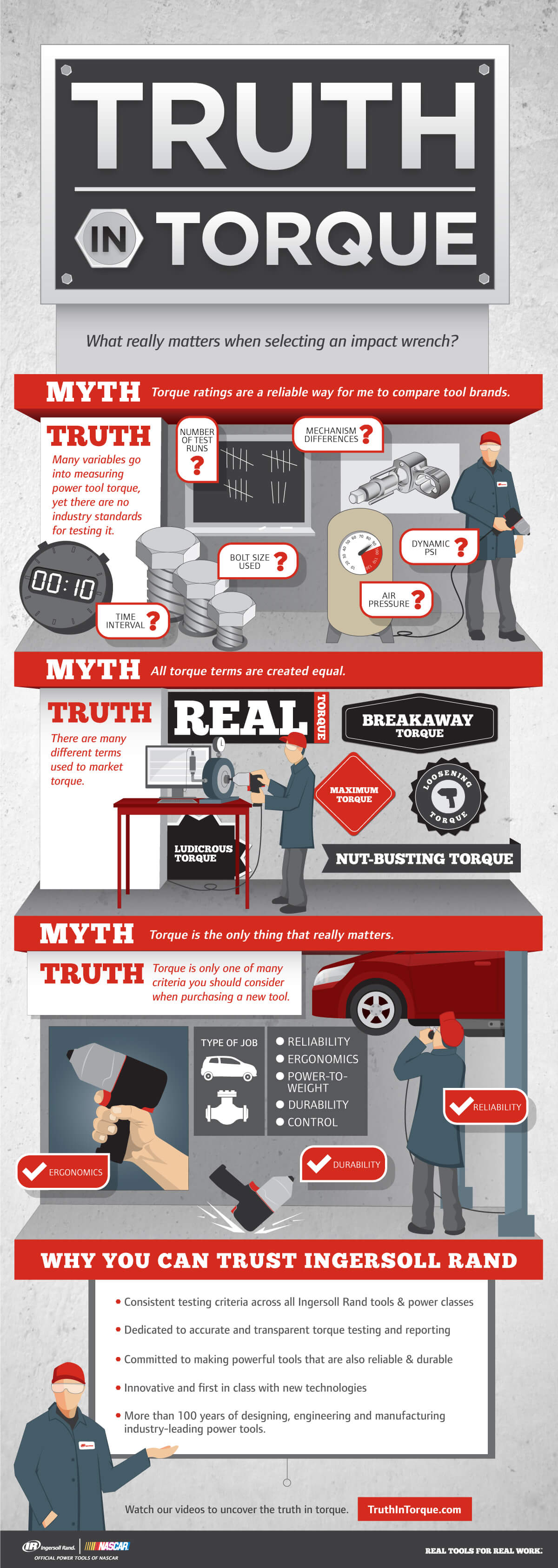Ingersoll Rand Tool Tip: How Much Torque Do I Need?
Torque is arguably the most important feature of a tool, and many people assume the more power, the better. However, it’s a mistake to assume a “when in doubt, apply more torque” attitude.
Torque is defined the length of the lever arm multiplied by the force applied. For instance, if you have a two-foot long bar and you hang a 10-pound weight from it, you have 20 foot/pounds of torque.
When considering how much torque you need to use for a particular job or application, consider the bolt size. This is because the requirements for torque are based on the bolt – not the torque equation we included above. As you can imagine, larger bolts can accept higher torque without stripping out. If the torque is too low, you run the risk of the bolt vibrating loose and falling out. Conversely, if the torque is too high, it might stretch and strip out, or cause the bolt to break in half.

“Many mechanics apply too much torque in the shop,” said Warren Seith, Ingersoll Rand Innovation Development Manager. “An application may only need 80-foot pounds, but they put 300-400 foot pounds on the bolt – and as we noted earlier, this can be dangerous because it can cause the bolt to break in half.”
Ingersoll Rand Impact tools are handy tools to have around, but they serve a specific purpose. Keep in mind that Impactools are reactionless, so the operator doesn’t feel how much torque has been applied or sense how tight the bolt is. That’s not to say that Impactools aren’t an important part of the shop, but there are better ways to tighten a bolt properly. Impactools are ideal for situations where you need to remove a bolt – especially those that are on very tight, rusted out or frozen – because it helps to quickly rip them off.
“When you’re tightening a bolt, the impact can easily apply too much torque,” said Seith. “Snug it slightly with impact, and finish with a hand torque wrench (or click wrench), because this allows you to measure and make sure you haven’t over-tightened the bolt.”
According to Seith, more and more tire shops are paying attention to this and adjusting accordingly. A big driver of this is customer safety. Tires can fall off because lug nuts are over-tightened, causing the lug nut to break off. In an instance where you’re dealing with a safety-critical fastener, such as a lug nut, you can use a torque stick to make sure you have not over-tightened the lug nut.
Remember that all car manufacturers recommend a torque for the lug nuts – this information can almost always be found in the vehicle’s manual. As for the “breaking point” of a bolt, it varies by application and bolt size.
A half-inch impact tool, like the Ingersoll Rand 2235TiMAX, is an excellent tool for removing lug nuts, especially if they’ve become rusted, frozen or over-tightened. However, it’s too powerful for putting them back on. Be sure to pay attention to how much torque you’ve applied to a lug nut or bolt to ensure a safe job done well.
This content was first published on the Ingersoll Rand website.

